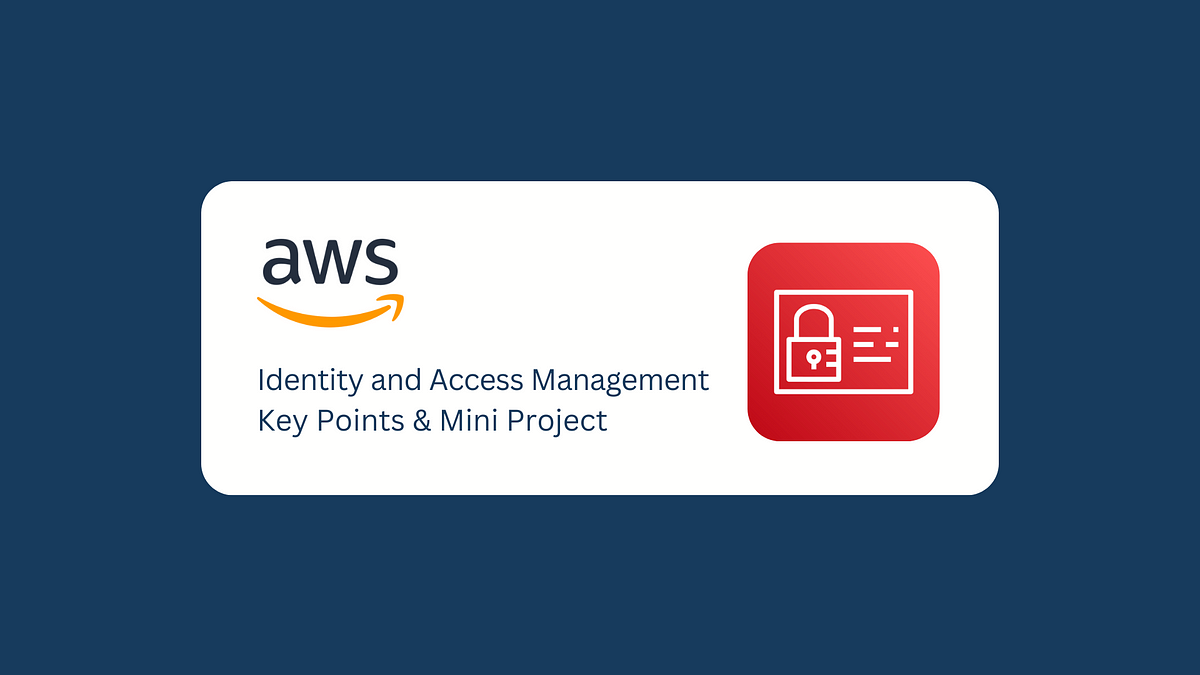
Are you interested in establishing a career in the field of cloud computing? If so, having knowledge about Amazon Web Services is mandatory because it’s one of the most powerful cloud service providers in the market. An AWS course will help you become aware of several architectural services and principles to build a cloud computing career.
The best AWS course will have a module or two dedicated to Identity and Access Management. This service is all about enabling AWS users to manage access to resources in a scalable and secure way. The IAM feature revolves around providing granular permissions to groups and users for accessing particular AWS resources.

The benefits of IAM are multiple, including the prevention of virus spread and monitoring of employee productivity. Moreover, the IAM service can significantly enhance user experience. Before enrolling in an AWS course online and learning about all the important concepts, you can check out some of the best practices for IAM.
Give permissions to groups over individual users
If you want to manage access for multiple users at a time, the IAM Groups feature will help you. It involves attaching permissions to groups over individual users. As a result, the users in a group will have the same amount of access.
This AWS Certification will focus on this best practice to simplify the permission management process. It will ensure that you can update the permissions of all users in a group at the same time. Moreover, it eliminates the risk of errors and inconsistencies assisted with permission policies for individual users.

Leverage AWS identity center and federation
It is no longer suggested to set up users directly on AWS IAM to streamline the task of controlling identities and access to AWS resources. Instead, AWS recommends employing a specialized identity provider (IdP) and allocating access to each identity using roles.
An IdP manages identities that can be employed across your AWS enterprise via federation. While the AWS Identity Centre can function as an IDP, it may be more advantageous to work with a third-party service specializing in identity management, particularly in larger-scale applications.
You can limit the danger of unauthorized access by leveraging an IDP to simplify the process of handling user access. Additionally, the Single-Sign-On feature is available with the AWS Identity Center. Therefore, it becomes convenient for users to access a multitude of AWS services, accounts, and applications without having to provide separate credentials.
With proper AWS training, you will learn how to create your users with the help of the AWS Identity Center. It is particularly beneficial when you are engaged in a small project where you are reluctant to use an external identity provider for using IAM users. It will help you transition to a multi-account strategy as per future needs and deliver users the benefit of multi-account user management and single sign-on capability.
Employ multi-factor authentication for IAM users
Several AWS training courses will talk about the significance of multi-factor authentication for the root user or other IAM users to secure the AWS account. This security practice brings an extra layer of protection to your account by introducing the need for a second factor. The second factor, like a physical token or a code generated by an app, is required along with the user’s password.
You can turn on MFA for an IAM user by heading to the IAM console and following the prompts. By creating a dedicated policy, you may also enforce the use of MFA across your whole AWS account or enterprise.
You may drastically decrease the risk of unauthorized access and safeguard your AWS resources by mandating MFA for all users. It’s crucial to highlight that MFA should be utilized alongside other security standards, such as evaluating and alternating access keys on a regular basis and enforcing strong password restrictions.
If you want to learn more about security practices taught in AWS training courses, watch this video: https://www.youtube.com/watch?v=HK_q1lH5x5M&pp=ygUWYXdzIGNvdXJzZSBzaW1wbGlsZWFybg%3D%3D.
Utilize roles to their highest extent
The best AWS course will definitely teach about IAM Roles because they are a significant and flexible concept. While IAM Roles are quite similar to IAM users, there’s one major difference. The difference is that numerous entities can assume a single role at the same time. This creates a secure mode of giving permissions by providing a greater number of temporary access grants without long-lived access credentials.
You can use a role’s trust policy to grant permission like a Principal. After that, identities like an IAM user will be able to take up that role. It will create safe access patterns like having IAM users in one account with minimal permissions and letting them take up roles for work in a different account.
Evaluate permissions at regular intervals
Any AWS course online will teach learners that regular review of permissions for IAM groups and roles is necessary for better security of resources. The access needs of users will continue to evolve with time. Moreover, new resources might get added or removed.

Without regular updation of permissions, users might have unnecessary permissions. It will accelerate the risk of data breaches and numerous other security incidents. Furthermore, regular reviews are useful for identifying misconfigured permissions like overly permissive roles or policies with greater access than required.Organizations will be able to offer the right amount of access to users to perform their job duties by regularly reviewing and updating permissions.
End note
The worldwide market for cloud computing will expand at a rate of 14.1% in the period between 2023 to 2030. Since AWS shows no sign of falling from its high rank in the cloud computing market, it’s a great idea to invest in an AWS training course. So, enroll in a course to learn about AWS and important concepts like IAM to build a lucrative career.






